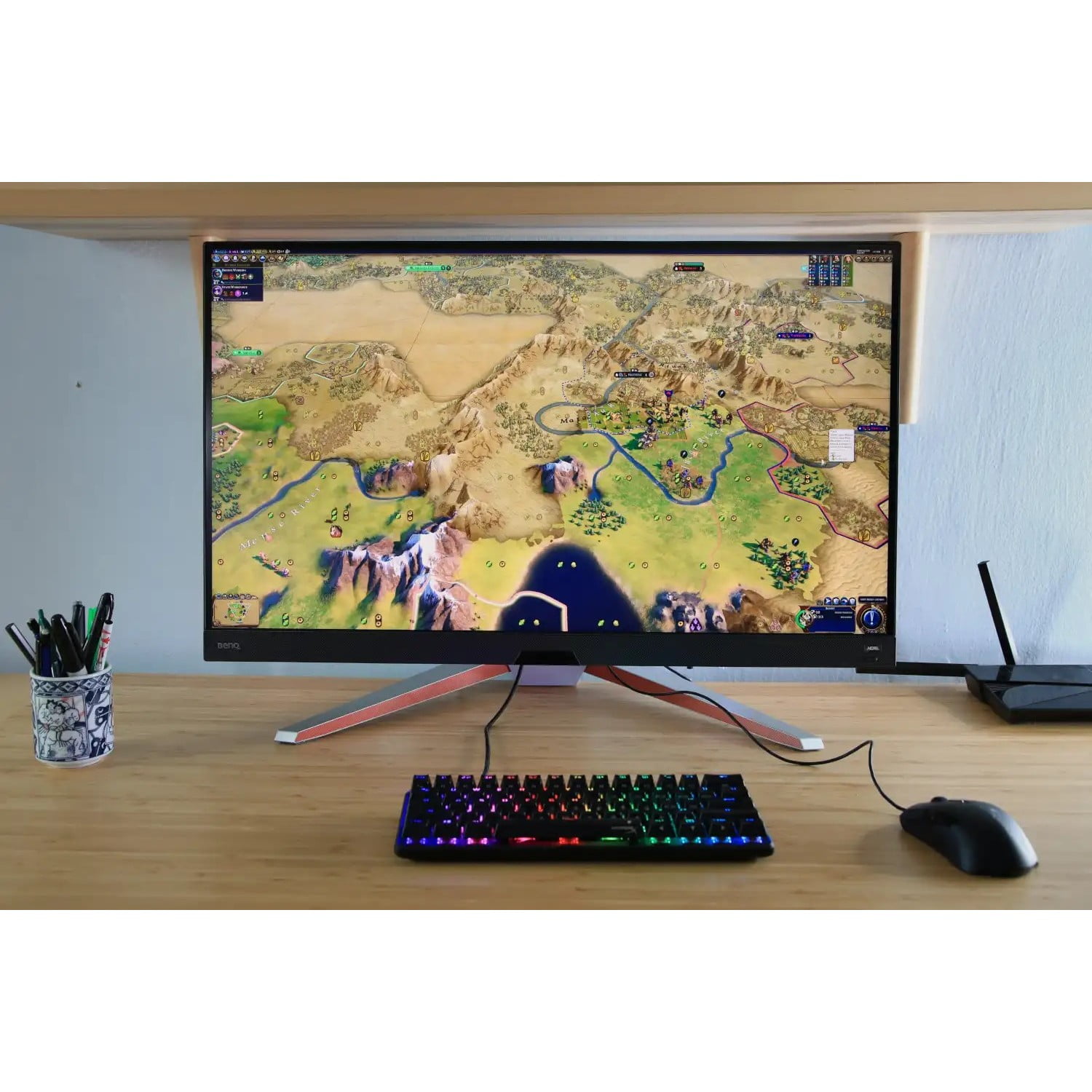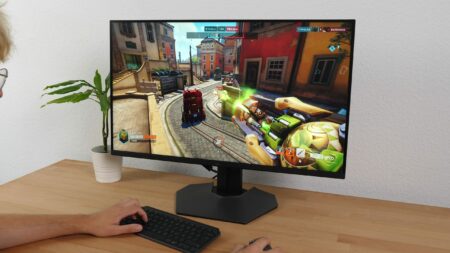CONS
- Dim when viewing SDR content
- Very high input lag
- Low contrast ratio
DELL 32 4K UHD GAMING MONITOR (G3223Q) SPECS
| Panel Size (Corner-to-Corner) |
32 inches |
| Native Resolution |
3840 x 2160 |
| Aspect Ratio |
16:9 |
| Screen Technology |
Fast IPS (FIPS) |
| Rated Screen Luminance |
400 cd/m^2 |
| Rated Contrast Ratio |
1,000:1 |
| Pixel Refresh Rate |
144 Hz |
| Adaptive Sync |
AMD FreeSync Premium Pro |
| Video Inputs |
HDMI, DisplayPort |
| USB Ports (Excluding Upstream) |
2 |
| VESA DisplayHDR Level |
DisplayHDR 600 |
| Dimensions (HWD) |
16.8 by 28.6 by 2.7 inches |
| Weight |
13.29 lbs |
| Height-Adjustable Stand? |
|
| Tilting Stand? |
|
| Swiveling Stand? |
|
| Landscape/Portrait Pivot |
|
Dell monitors have established themselves as reliable assets for productivity, providing top-notch displays for both office and home usage. While Dell’s gaming monitors are typically associated with Alienware, the company’s gaming subsidiary, there are instances where Dell-branded gaming monitors are released, such as the Dell 32 4K UHD Gaming Monitor. This monitor is equipped with all the necessary features for modern gamers, including HDMI 2.1 ports that support high-refresh rates and impressive maximum brightness for HDR content. However, the measured standard brightness (SDR) levels and input lag of this high-resolution panel may not leave a lasting impression. Alternatively, for a similar price, you can opt for our preferred choice for 4K gaming monitors, the MSI Optix MPG321UR-QD.
A high-definition display with extremely thin borders.
To begin, let’s focus on the fundamentals. The Dell 32 4K UHD Gaming Monitor (model G3223Q) boasts a straightforward and recognizable aesthetic, featuring incredibly slim borders on its upper and lateral edges. This design choice enables an expansive display area while maintaining a sleek frame.

The monitor is supported by a spacious base that enables it to rotate nearly 180 degrees, in addition to providing ample tilt and height adjustment capabilities. On the back of the monitor, there is a distinctive V-shaped design outlined by the monitor’s single LED light. Positioned at the side are four buttons and an onscreen display (OSD) joystick to assist in navigating through the monitor’s settings, including selecting from various preset game modes, modifying response time, and activating a Console mode for console gaming.
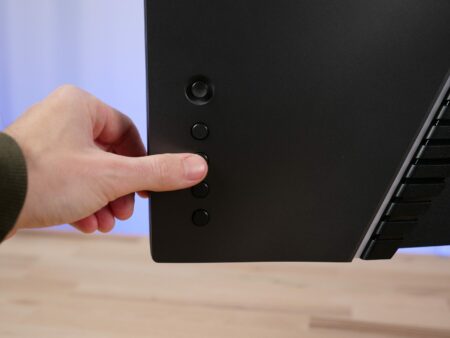
The 4K display, measuring 32 inches, utilizes a Fast IPS panel. Dell claims that this panel can achieve a response time of 1ms gray-to-gray (GTG). Additionally, the monitor is certified for VESA DisplayHDR 600 and covers 95% of the DCI-P3 color gamut. We will delve into the significance of these specifications in our forthcoming test analysis.
Upon closer examination of the I/O cluster, several impressive features come to light. Notably, there are two HDMI 2.1 ports that enable an exceptional gaming experience with refresh rates of up to 144Hz (or 120Hz for Sony PlayStation 5 or Xbox Series X) at a stunning 4K resolution. In addition to this, there is a DisplayPort input, two USB Type-A ports, one USB Type-B upstream connection, a headphone jack, and a security-cable lock notch adhering to the Kensington standard. It is worth mentioning that a USB Type-C port is absent from the available options. However, to compensate for this, the package includes three cables: HDMI 2.1, DisplayPort, and USB 3.2. Furthermore, the presence of a VESA mount adds to the versatility of this device.

The monitor is remarkably lightweight at only 13.3 pounds, despite its bulky base. It offers 5 inches more screen space than 27-inch monitors, yet it weighs less than many of them, such as the HP Omen 27u 4K and the Sony Inzone M9. Measuring at 16.8 by 28.6 by 2.7 inches (HWD), it is also sleek and fits perfectly on smaller desks.
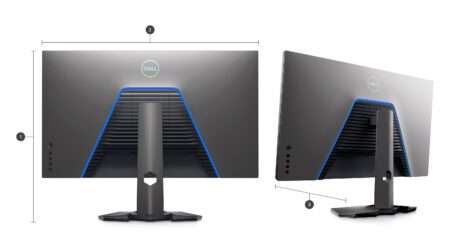
Returning to the display itself momentarily, let’s focus on Dell’s utilization of a Fast IPS panel, which sets it apart from the typical IPS panels commonly found in gaming monitors and laptops. Fast IPS panels boast a response time that can be up to four times faster than that of regular IPS panels. Dell promotes the response times of its monitor by employing GTG, a metric that measures pixel speed and indicates the duration it takes for a pixel to transition from one gray level to another.
GTG is not a standardized metric; different vendors have their own ways of measuring levels. utilizes input lag as a means to gauge a monitor’s responsiveness. (For more information on our monitor testing methods, please refer to our article.) Input lag refers to the duration it takes for the monitor to display the received signal, while response time pertains to the time it takes for pixels to transition from one color to another. It is crucial to bear in mind that monitors can possess both low response times and high input-lag rates, as well as the opposite. This serves as an important reminder as we proceed to our testing section below.
Testing the Dell 32 4K UHD: Requesting an Increase in Brightness.
After familiarizing ourselves with Dell’s stated capabilities for its 32-inch UHD 4K monitor, we will proceed to examine these assertions through a series of practical evaluations. These evaluations will involve the utilization of Datacolor’s SpyderX Elite tool, our HDFury Diva input lag tester, and engaging in traditional gaming activities.
In our initial test collection, we evaluate the luminosity, contrast ratio, and color range by utilizing the SpyderX Elite alongside the display set to its default picture mode while receiving an SDR signal.
The Dell 32-inch 4K UHD displayed a dim brightness of 189 nits in SDR mode and a black level of 0.22, resulting in a contrast ratio of 850:1. While a 1,000:1 contrast ratio is standard for an IPS-panel gaming monitor, the Dell monitor slightly misses the mark, with its main drawback being the low brightness.
The Dell 32-inch 4K UHD exhibited a subdued brightness of 189 nits in SDR mode and a black level of 0.22, leading to a contrast ratio of 850:1. Although a 1,000:1 contrast ratio is common for an IPS-panel gaming monitor, the Dell monitor falls slightly short, with its primary issue being the low brightness.
Having said that, the HDR performance showed significant improvement. Upon retesting the brightness with HDR enabled, the Dell 32 4K UHD reached 495 nits. While falling short of the DisplayHDR 600 criteria, it still represents a commendable HDR score and surpasses its predecessor, the Dell U3219Q 4K.
Our color-gamut analysis yielded favorable results, showcasing the Dell 32 4K UHD monitor achieving full coverage of 100% sRGB, 89% Adobe RGB, and 94% DCI-P3. While not as impressive as the MSI Optix MPG321UR-QD in the same price range, it still offers a commendable color spectrum for a monitor priced below.
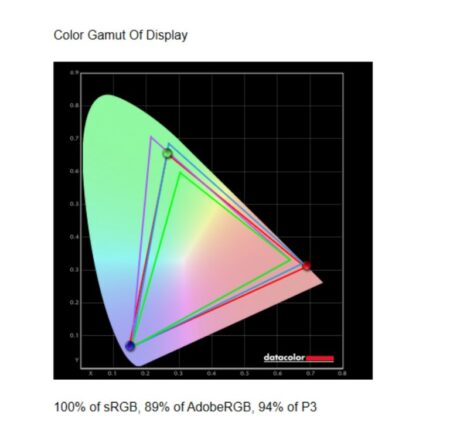
The gaming panel exhibits satisfactory color accuracy results, as indicated by an average Delta E of 1.41. Individuals engaged in color-sensitive programs, such as content creators and designers, may already be aware that a higher Delta E value signifies a greater deviation of a common color from its purest form.
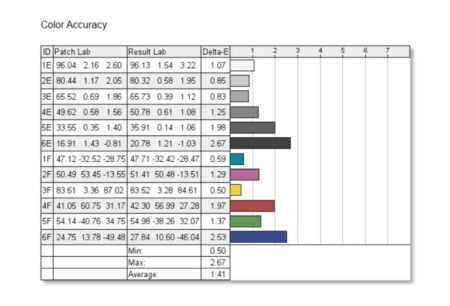
Media and Gaming Performance.
Prior to engaging in gaming and movie-watching activities on a monitor, we conduct a final benchmark test, which is arguably the most crucial for dedicated gamers. By utilizing the HDFury Diva, we have assessed the input lag to be 14.7 milliseconds, surprisingly high for a gaming monitor. It is worth noting that a latency of 15 milliseconds or lower is generally satisfactory for the majority of gamers. However, if you are deeply committed to esports, it is advisable to seek a monitor with minimal input lag. While the Dell 32 4K UHD should suffice for regular gameplay, enthusiasts in the Following the benchmarking process, the subsequent phase of our evaluation involves utilizing the monitor for gaming and movie-watching purposes. In this assessment, I selected Doom, the high-speed shooter released in 2016, and Halo Infinite, both of which delivered impressive performances. I observed no ghosting in either game, attributed to the monitor’s exceptionally low response time. Nevertheless, the screen’s dim brightness was evident, as it was during the viewing of the 4K Costa Rica test footage. While the overall quality was commendable, the noticeably low standard brightness was somewhat jolting.
Verdict: Impressive HDR, Yet Lags Behind in Other Aspects.
The Dell 32 4K UHD monitor is actually quite decent. Its sleek and lightweight design is bound to satisfy, and its display panel offers impressive visuals for video watching or gaming. However, it is unfortunate that the display appears dim when viewing SDR content and the input lag falls short of being top-notch. These two drawbacks prevent the monitor from achieving greatness.
If you are someone who enjoys HDR gaming and doesn’t frequently engage in games that require quick reflexes, the Dell 32 4K UHD is a dependable option. It particularly caters to those who desire higher frame rates in their console games. On the other hand, if you are searching for a comprehensive 4K gaming package, the MSI Optix MPG321UR-QD is an outstanding alternative of similar size. However, if performance is more important to you than peak resolution, we recommend considering the MSI Oculux NXG253R for a high-FPS 1080p gaming experience.

